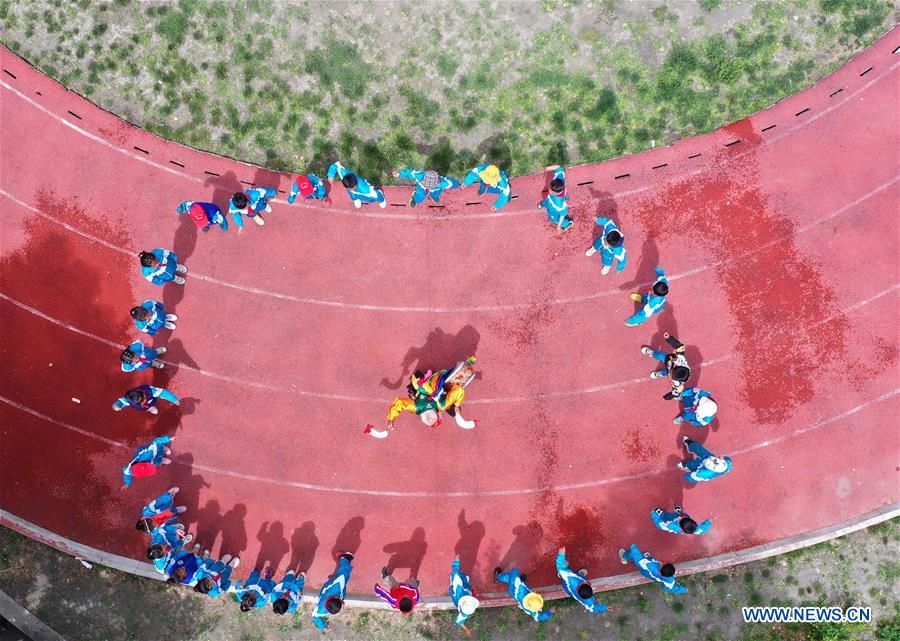Traditional dance helps reduce poverty in Shannan, Tibet
Jiuhe Zhuo dance, originated in Qonggyai County of Shannan, has a history of more than 1,300 years. It has been a favorite dancing form for local people in Shannan to pray for good luck since ancient times and was dubbed waist drum dance in Tibet.
Aerial photo shows Nyima performing Jiuhe Zhuo dance at a primary school in Qonggyai County in Shannan, southwest China's Tibet Autonomous Region, July 2, 2020. Jiuhe Zhuo dance, originated in Qonggyai County of Shannan, has a history of more than 1,300 years. It has been a favorite dancing form for local people in Shannan to pray for good luck since ancient times and was dubbed waist drum dance in Tibet. Nyima, an inheritor of Jiuhe Zhuo dance, which is a national intangible cultural heritage, began to learn the dance from his father at the age of nine and has been dedicated to Zhuo dance performance for over 60 years. His performance once won a national award for folk arts. After decades of study of the dance, Nyima has formed his unique style. During the performance, he plays the role of leading dancer and controls the movements and rhythm of the dance. Nyima has trained dozens of apprentices and formed a Zhuo dance performing team in Jiuhe Village. Now, young dancers of the team often perform in different places. The Zhuo dance has become an important approach to reducing poverty for local villagers. [Photo/Xinhua]


